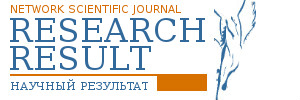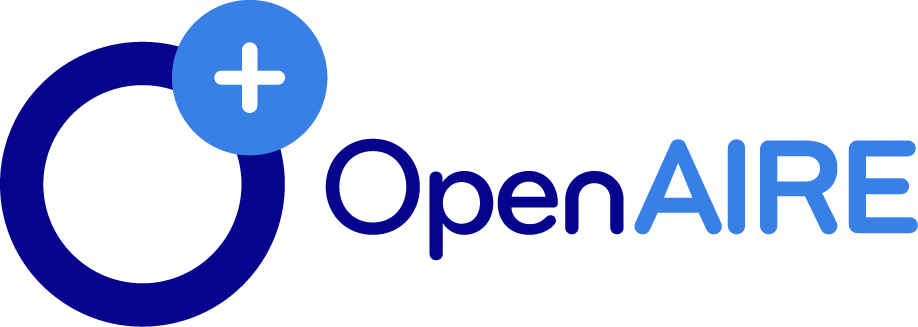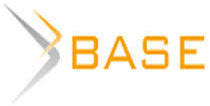Introduction. The basic meaning of being competent is to be “in charge, authoritative, formally trained (qualified) for some kind of job, capable” [1; p. 422]. If we take in consideration these definitions, competence can be explained as an individual's ability to accomplish oneself. "This ability which is based on the whole series of predispositions a person develops throughout the whole life. Two mutually connected aspects can be recognized while studying the word competence: self-competence and social competence. The process of gaining competence implies constant improvement of one's personality. This process gains its full meaning throughout interaction with other people. There are numerous characteristics which are considered important for accomplishment and development of individual's competences. As key characteristics Jovanović singles out: autonomy, tolerance, participation, open mind and flexibility [3, p. 98]. All previously mentioned characteristics are closely interwined and conditioned. They are built in both earlier mentioned aspects of competence. These characteristics are prerequisite and indicator in the processes of development, decision making, planning, problem solving and self-development in the whole. Therefore, the development of competences can be understood as a parallel development of interpersonal abilities (social competence).
For further development of these complex abilities (which are contained in the term competence) person, society and education can be responsible of. Educational process can be helpful to a student. It can help one to develop self-competence necessary for individual and social progress. Along with these tendencies the role and position of the student is changed. Contemporary pedagogical models of education single out student's willingness to follow and manage the changes as well as student's ability to solve problems of personal and social reality. One of the models called "action competence education" points out these skills as key ones for development of an individual's competence: 1. skills oriented towards solving the problem, 2. skills oriented towards self-maturing, 3. skills oriented towards cooperation, 4. skills oriented towards efficiency, 5. skills oriented towards self-organization, 6. skills oriented towards wholeness [2, p. 66].
Theoretical review – Professional competences of the teacher as a precondition to successful teaching
Due to enlisted opinions teacher's role in the educative process has changed. His/ her task is to help the gaining and development of students' competences which are the basis for further development of independent, whole personality free and ready to question reality. The role of the teacher in this process is the crucial one. While talking about the significance of the teacher in the educative process, Popovic quotes: "Teacher is the schools soul. He/ she must above all perform his/ her job properly, educate youngsters to become intelligent, noble people and has to work passionately" [7, p.558]. This opinion old nearly century and a half clearly reflects contemporary tendencies in education. Teacher is the key factor which influences students' personality development by using his/ her knowledge, attitude, personal qualities and opinions. He/ she is the one who should nurture and encourage life values by being the true example to children. Teacher is often struggling with many limiting factors on which he/ she has no influence but despite this/ difficulties, teacher is the one who is responsible for quality and success of the education. Enlisted opinions and tendencies raise the question: how big is the influence of teacher's professional competences in the process of students' development of competences in today's society? Therefore, which values and actions of the teacher make him a successful subject in educative process?
Simple enumeration of desirable values which teacher should possess is just not possible. Successful teacher, Todorović points out, should possess all those values of an "ideal" teacher. Ideal teacher does not exist for sure but an individual who loves his/ her job and wants to perform it in the best possible way, should aspire to that ideal by constant self-improvement (2007). Successful teacher should be a good pedagogue. He/ she should be a good example to children but his/ her personality must be strong, stable and emphatic. Teacher has to be tolerant and flexible, has to be highly educated and possess methodical, didactical and psycho-pedagogical knowledge etc.
Since 1970s approach to teacher's profession which includes standardised competences began to develop. Contemporary concepts of education form a list of competences in order to arrange and single out key factors for successful teaching. The other aim is forming of a successful and productive teaching staff. However, approach to teacher's profession by using standardised competences does not match the dynamic nature of educative process. This approach raises numerous questions and dilemmas such as: which competences should be considered as key ones, how to define criteria for choice of suitable standards, how not to neglect unique and different in the process of following the universal qualities, how to perform the measurements and comparisons of given values, how to bring into accord formal list of standards with true state of school praxis etc [8].
If we take into consideration the complex nature of educative process and teacher's multiple role, it does not come as a surprise that literature offers us numerous lists of standards with different contents. We will mention only one list of standards that is actual in our educative system. It is called Standards of competences for teachers profession and his/ her professional development. This list was officially accepted by National educative board in April of 2011. This list refers to various competences related to: educative field, teaching subject and methods, teaching and learning process, support toward students personality development,communication and cooperation [12].
Characteristics of the art teachers` basic professional competences
By taking into consideration the fact that standards refer to teacher's profession in the whole, they are very general and consist of what is in common and of universal importance. Every teaching school subject has its own characteristics. Therefore, we can assume that different subject teachers have different combination of competences which are expressed. Lessons in arts excel in their uniqueness. Teacher is required to possess specific abilities and ways of communication [10]. Lessons in art are defined by creative atmosphere, partnership, open communication, emphasized individual engagement of students. Certain skills and values enlisted in standards of competences are very important for art teacher's profession.
These values and competences of the teacher, in the context of art education, can be singled out as extremely important ones: organisational skills, team work abilities, partnership, cooperation, high educational background, knowing of art theory and praxis in its contemporary tendencies, didactic- methodical abilities in the field of arts, knowing of child's psychological and sociological personality aspects, possession of human values such as kindness, humanism, tolerance, objectivity, enthusiasm, optimism and love towards the performed job [11, p. 223].
Today's art teacher's tasks result from contemporary concept of artistic education. The art teacher's role is extremely important when it comes to achieving goals and solving artistic tasks. It is also important regarding child's artistic development. According to Kamenov, curriculum activities and means by which they are created do not present the key factor in the process of child's development. The most important role has the person who corresponds in the process of artistic activity [4, p. 26]. Karlavaris points out that art teacher is the creator who can solve his/ her tasks only throughout artistic use of pedagogical principles which are in accord with the specific situation and students present state [5, p. 48]. Art teacher is the one who by creating pleasant atmosphere inside the classroom can influence the development of students' creative potentials and of his/ her personality in the whole. Empathy and flexibility of the art teacher are the important precondition for creating creative atmosphere which will improve mutual respect, tolerance and trust. The process of child's artistic development will be a successful one and in accord with its complete development under these conditions. Art teacher must direct and encourage student in his/ her artistic activities. Teacher has to take care of students' personal progress without influencing the students' spontaneity [6].
Specific competences of the art teacher
Art teacher can be considered as an organizer of the artistic activities inside educational process. When it comes to organisation of lessons, teacher uses curriculum basis. He/ she brings into accord personal work with the needs of the group and individual peculiarities of students. His/ her main role is to provide those conditions which will be suitable to development of child's artistic creativity. Teacher needs to encourage the student inside well organised surrounding, to include students and orient them towards achieving aims and tasks. Teacher with good organisational abilities create new goals by integrating students in the process of their realisation. Under those circumstances student is familiar with curriculum, is involved in group decisions and is aware of his/ her role in achieving goals. Of course, teacher's flexible approach and his/ her primary orientation towards students is the most important factor in the process of learning. Curriculum represents the works line of direction. It does not function as a purpose and aim to itself.
The basic aim of artistic education is an intensive and containable creative and universal development of the child. In order to achieve this, teacher has to select activities according to plan, structure child's surrounding, prepare tools and material with students and create suitable working atmosphere [6, p. 6]. However, beside these demands, one of the key methodical aspects of art education is the students' motivation for playing, learning and creation. It implies high level of teachers competence in this particular field of education. It also depends on skills used to implement this competence in concrete educational praxis. Creating of positive learning climate is one of the most important aspects in the process of students' motivation. In order to achieve positive pedagogical climate inside the classroom teacher has to be open-minded, capable of teamwork, creating partnership and cooperation. Therefore, teacher influences the class atmosphere throughout his/ her opinions and deeds. He/ she can make it more encouraging or otherwise more complicated. The climate inside the classroom is also determined by many other factors that teacher can not influence. However, teacher's role in the process of creating the partnership relations is very valuable. He/ she should promote the flexible atmosphere which possesses high level of tolerance and mutual understanding and "knowing of which role is whose" [7, 556]. If relied on already widely accepted typology of Lippit and White, it is desirable that teacher represents the democratic type which is ready for cooperation and teamwork [11, p. 221]. For education in arts it is especially important to achieve spontaneous and close atmosphere which will encourage the divergent way of thinking and creativity.
Harsh and rigid atmosphere is not suitable for development of child's creativity. However, the atmosphere of full freedom is not so helpful either. Child should be encouraged but without intrusion of teachers ideas and offerings of final solutions [6]. Kamenov points out that teacher is a grownup partner who should sincerely and fully participate in his/ her work with children. It is important to build qualitative friendship relations which imply mutual trust. Proportional divide of rights and duties will create a democratic atmosphere which is suitable for easier and healthier built of authority and mutual respect [4, pp. 26-30].
No matter which subject is taught, teacher should possess wide basic education and culture. He/ she should also be an example to his/ her students concerning knowledge. Not only does he need to be familiar with the field of education which is taught, but he must connect his/ her professional knowledge to other educative fields. Wide basic education can help teacher in making this correlations. It can help him make lessons more interesting. Basic education can help him in giving answers to students or at least directing them to sources where answers could be found. Karlavaris points out the significance of art teacher's wide basic education. The correct art orientation is the result of it [5, p. 48]. Teacher's role is not only to bring students into the area of creativity, but to familiarise them with the surrounding world also. In order to do so, a teacher must be widely educated and informed not only concerning his/ her profession, but also in the fields of culture, science and people`s lives.
Although previously mentioned abilities are very important, knowing the theory and praxis of art education represent the key factor. A teacher must be familiar with the taught educative field and with its connection to other disciplines. That way he/ she is able to systematically and according to plan, familiarize students with the concrete field. A teacher should improve his/ her abilities, gain new knowledge and implement it in the educative process. It is extremely important that art pedagogues know the basics of art teaching methods, its notions, objectives, aims and tasks and its relation to other sciences and arts. It is also important that teacher is familiar with styles of education which are the product of humanistic approach that characterises contemporary school. He/ she should also be familiar with The New Concept of Art Education by B. Karlavaris. Art knowledge is acquired in two possible ways: throughout practical art work and throughout theoretic acknowledgments. Therefore, a teacher must be familiar with both practical and theoretic aspect of the subject. This means that he or she should know characteristics and possibilities of art techniques and materials along with being well educated concerning his/ her profession. In terms of educative quality, it is of crucial importance that acquired theoretical knowledge is used properly by a teacher in actual praxis.
In order to successfully pass on his/ her theoretical and practical knowledge, it is very important that a teacher is familiar with didactic-methodical principles. We will try to describe in short this wide scientific field by using professional literature. An art teacher is didactically and methodically qualified if he/ she is familiar with the role and goals of education in arts and with methods and specifics of educational work. As earlier mentioned, it is important that a teacher knows characteristics and means of equipment usage, art techniques and materials which are in accord with the artistic fields and children's age. A teacher must explain the work technique and let students feel the material themselves when dealing with new materials unknown to children [6]. A teacher has to use various didactical means according to plan, such as text-book and hand-book literature and working equipment. A teacher must know the criteria and means for the right choice of themes which will encourage child's artistic creativity. These criteria and means must be in accord with child's age, his/ her interests and individual characteristics. An art pedagogue has to know and use aspects of analysing child's art works, criteria of evaluation and rewarding. In order to do so, a teacher must know aesthetic, didactic and educational function. He/ she has to know the purpose of exhibiting children's works. Observing, experiencing and aesthetics evaluation are important for the process of education in arts. Therefore, a teacher has to be trained concerning those fields. Organised visits to various institutions of culture, such as museums, galleries and ateliers, can be very inspiring. He/ she must know the principles that are the starting point in the process of cultivating child's artistic expression in order to use means which encourage creativity and avoid those which obstruct it. A child needs encouragement to deviate from standards and try something new. On the other hand, there should be no kind of interference or obtrusion [6].
We have mentioned earlier that a teacher must take into consideration the age of a specific group and age of every child individually. In order to achieve this, he/ she does not only have to know the psychological, emotional and social aspects of child's personality development, but also his/ her role in this specific process. An art teacher must be familiar with the function of artistic expression in the development of a child's personality. Numerous researches point out pedagogical and psychological significance of a child's artistic expression in terms of a child's personality development in the whole and development of its abilities. A child communicates with the surrounding world throughout its artistic expression. Because of this, a child's artistic abilities should be encouraged. Art pedagogues must also know the characteristics and specifics of a child's artistic expression development according to its age. The development of the child is an integral process which helps us recognise the phases in development of the child's artistic expression. All the children go through same phases but the dynamics and level of their achievement differs and is determined by individual uniqueness.
Planning is a very important element in the process of teaching. The same process is responsible for achieving educative goals which are based on curriculum contents. In order to get whole and clear curriculum, it is necessary to come out with a schedule for all of these contents. Harmony between time and meaning must be respected. Whether we talk about annual, monthly or daily level of planning, it is important to bear in mind the accord with aims tasks and results which come as a consequence. Curriculum contents which are drafted this way are only the start point in further process of teachers` planning. Curriculum is not the main factor when we talk about planning. Those are the specifications of the certain group, the classroom conditions and various other internal and external factors which influence the flexibility of the approach to certain lesson in terms of planning and realisation.
The significance of the creative approach towards planning in art education is enormous. Therefore, even the best curriculum can be a complete failure if performed uncritically by teachers [11,
p. 333]. Following which rules does a teacher modify the given curriculum? Beside curriculum, children's needs and their artistic-expressive potentials must be a starting point in the process of planning [6]. It means that a teacher should adapt his/ her plan to the specific qualities of a certain group or a class and to individual characteristics and abilities of the student. A teacher who properly does his/ her job, follows and values the results of children and even himself, analyses previous situations, is able to create a plan which encourages child's artistic-expressive development and his/ her personal development in the whole.
Conclusion. The teacher's profession is a humanistic one and there is no clear boundary between his/ her professional role and his/ her own personality. In order to meet the expectations, it is desirable that the teacher possess humanistic personality values. Above all he/ she should possess human qualities because children follow his/ her example. That represents one of the strongest means in the process of communication between the teacher and the children [7, p. 557]. He/ she should be a role model to his/ her students' considering knowledge, life values and opinions which are followed by himself/ herself in every way. He/ she should be an example to children as an individual who performs his/ her job properly and skilfully, who solves problems systematically and patiently and, thanks to his/ her hard work, achieves success [4, p. 27]. Therefore, along with verbal and visual information, strong personal example can additionally impact the forming of a child's opinions.
We have already mentioned several times the importance of successful communication which is a precondition and an important factor in the process of development of enlisted competences. Communicative competences of the teacher are often a subject of professional literature. We will try to give a basic overview of these competences. Quality communication and ability to perform a discussion are very important in many professions. It is also important in a teacher`s profession. Quality of the communication is determined by numerous factors. We will mention some of them which are often used in professional literature. Planned, effective and congruent discussion can be performed when: comfortable atmosphere is created inside the class, the extents of communication are determined and respectful, confident relationship between the student and teacher is established. In those conditions a teacher does not dominate in terms of communication. He/ she is ready to listen and bring into accord his/ her experience with theirs. Except these in literature usually mentioned factors, there are also other ones that cannot be controlled by the teacher. They also influence the quality of communication along with students' readiness for cooperation.
The same nature of art education demands the active participation of students. Therefore, partnership communication is encouraging. Which the methods of communication are used during art lessons? The beginning of communication starts with a child's first attempt to name his/ her first pencil pattern. Therefore, throughout artistic expression a child communicates with the world that surrounds him / her and the need to represent its thoughts and feelings grows in time. By using sketches as a form of nonverbal communication, a child expresses what cannot be expressed through words. The teacher is the one who should interpret those messages and implement them during further communication. On the other hand, the development of communicational skills directly affects child's artistic expression by enriching it. Therefore, good verbal communication leads to quality artistic communication [11, p. 227]. Tender and open communication, adapted to child's possibilities, should help children in the process of imaginative and unconventional solving of artistic problems. If a teacher prepares himself properly for the discussion, clearly informs his/ her collocutors and actively listen to them, the right conditions for opening of discussion will be achieved. This exchange of thoughts and experience can induce the critical opinion and tolerance. It can also offer some solutions which are not so common.
In the end it is necessary to say: in order to fulfil these conditions, a teacher must love his/ her job and needs to understand the meaning and importance of educational process in which he/ she participates. Along with numerous encountered difficulties such as proportionally small number of lectures, quantity of class students, poorly equipped cabinets, marginalized state of education in arts, it is hard for today's art teachers and pedagogues to preserve their enthusiasm. However, enthusiasm is surely necessary for proper and successful art teacher's work. Kamenov points out the significance of a teacher's love towards his/ her job and profession. It is very important that teacher enjoys the quality time spent in the company of children. That kind of teacher identifies himself/herself with children, is interested when it comes to solving their problems and participates as an equal partner in their activities.
Информация о конфликте интересов: авторы не имеют конфликта интересов для декларации.
Conflicts of Interest: the authors have no conflict of interests to declare.

















Reference lists